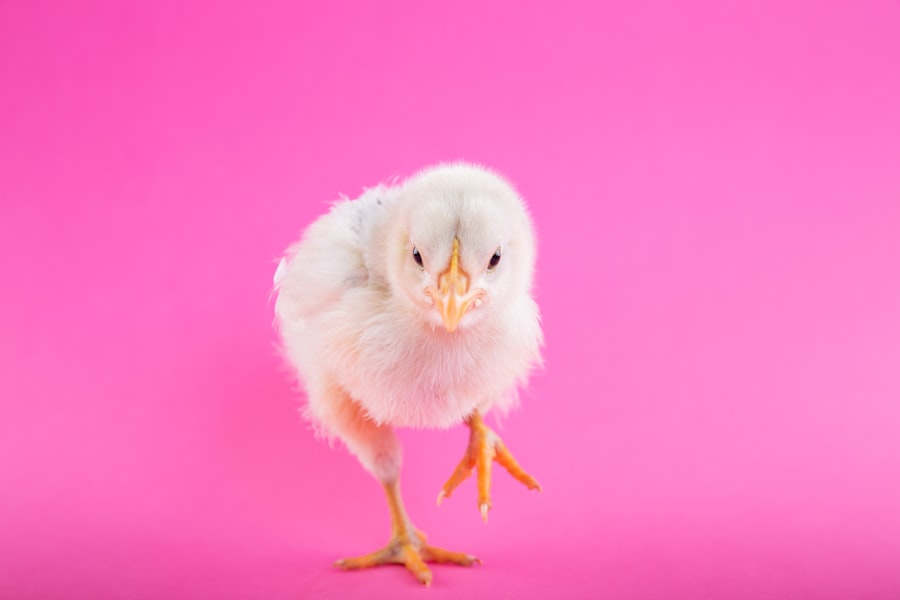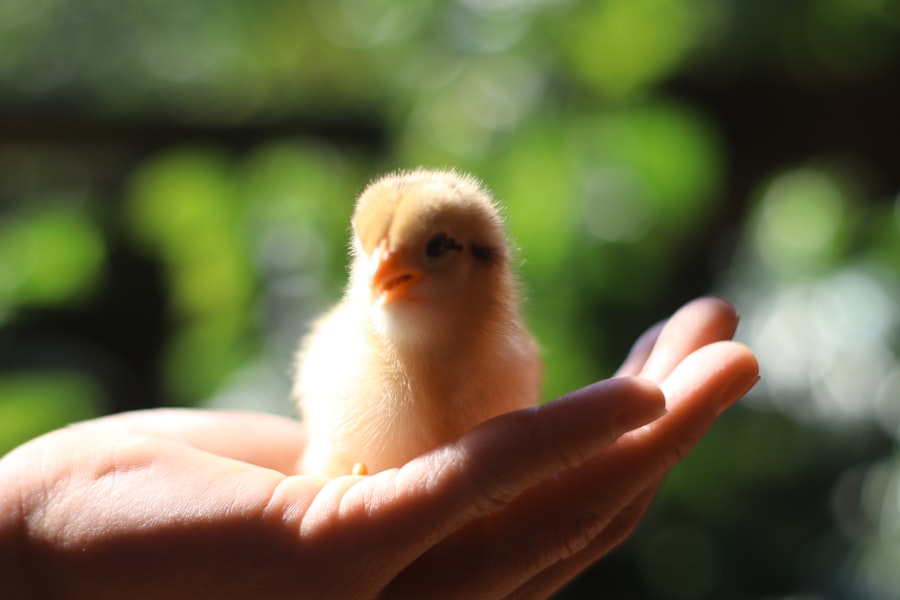A brooder is a crucial tool for raising young chickens, providing a warm and secure environment for chicks during their early developmental stages. It replicates the warmth and protection typically offered by a mother hen, ensuring the chicks’ health and growth. Without a brooder, young chickens are vulnerable to cold temperatures, predators, and other environmental risks.
The brooder also serves as a convenient space for chicks to access food and water, promoting their overall well-being. It is essential for creating optimal conditions for young chickens to thrive and mature. Moreover, a brooder plays a vital role in regulating temperature for young chickens, which is critical for their survival.
In the first few weeks of life, chicks are unable to effectively regulate their body temperature, making them susceptible to cold stress. The brooder provides a controlled heat source, such as a heat lamp or heating pad, to maintain a comfortable environment for the chicks. This is particularly important during colder months or in areas with variable temperatures.
By maintaining an appropriate temperature, the brooder prevents hypothermia and other temperature-related health issues in young chickens. Ultimately, the brooder is instrumental in safeguarding the well-being of chicks and establishing a foundation for their healthy development and future success.
Table of Contents
- 1 When to Transition Chickens Out of the Brooder
- 2 Signs that Chickens are Ready to Leave the Brooder
- 3 Providing a Suitable Environment for Chickens Outside of the Brooder
- 4 Monitoring Chickens After Transitioning from the Brooder
- 5 Potential Challenges When Transitioning Chickens from the Brooder
- 6 Tips for Successfully Raising Chickens Outside of the Brooder
- 7 FAQs
Key Takeaways
- A brooder is important for young chickens to provide warmth, protection, and a controlled environment for their growth and development.
- Chickens can be transitioned out of the brooder when they are fully feathered, around 6-8 weeks old, and the outside temperature is consistently above 70°F.
- Signs that chickens are ready to leave the brooder include feather development, increased activity, and the ability to regulate their body temperature.
- Providing a suitable environment for chickens outside of the brooder includes a secure coop, access to fresh water and food, and protection from predators and extreme weather conditions.
- Monitoring chickens after transitioning from the brooder is crucial to ensure they are adapting well to their new environment and to address any potential health or behavioral issues.
- Potential challenges when transitioning chickens from the brooder include bullying, pecking, and stress from the new environment, which can be mitigated through proper introduction and monitoring.
- Tips for successfully raising chickens outside of the brooder include gradual introduction to the new environment, providing enrichment activities, and regular health checks to ensure their well-being.
When to Transition Chickens Out of the Brooder
When to Transition Chickens Out of the Brooder
Chickens can typically be transitioned out of the brooder when they are around 6-8 weeks old, depending on their breed and the ambient temperature. At this stage, they have developed enough feathers to regulate their body temperature more effectively and are better equipped to handle outdoor conditions.
Factors to Consider Before Transitioning
It is essential to observe the chicks closely and consider factors such as their size, feather development, and behavior before making the transition. Moreover, transitioning chickens out of the brooder should coincide with favorable weather conditions.
Ensuring a Smooth Transition
It is best to wait until the ambient temperature is consistently mild, with minimal fluctuations between day and night. This ensures that the chickens are not exposed to sudden drops in temperature that could compromise their health. Additionally, it is advisable to introduce the chickens to their new outdoor environment gradually, allowing them to acclimate to the surroundings before fully transitioning out of the brooder. By timing the transition carefully and considering environmental factors, it sets the stage for a successful adjustment for the young chickens as they move into their next phase of growth.
Signs that Chickens are Ready to Leave the Brooder

There are several signs that indicate when chickens are ready to leave the brooder and transition to an outdoor environment. One of the key indicators is feather development. As chickens mature, they develop their adult feathers, which provide better insulation and protection from the elements.
When the majority of the chicks have fully feathered wings and bodies, it is a strong indication that they are ready to leave the brooder. Additionally, observing their behavior can provide valuable insights into their readiness. If the chicks are active, alert, and exploring their surroundings with confidence, it suggests that they are prepared for the transition.
Furthermore, monitoring the chicks’ ability to regulate their body temperature is crucial in determining their readiness to leave the brooder. As they grow, they become more adept at maintaining a stable body temperature without relying on external heat sources. This can be observed by gradually reducing the heat in the brooder and observing how the chicks respond.
If they huddle together excessively or show signs of discomfort, they may not be ready to leave the brooder. On the other hand, if they spread out comfortably and exhibit normal behavior without relying on the heat source, it indicates that they are capable of handling outdoor conditions. By paying close attention to feather development, behavior, and temperature regulation, it becomes easier to identify when the chickens are ready to transition out of the brooder.
Providing a Suitable Environment for Chickens Outside of the Brooder
Creating a suitable environment for chickens outside of the brooder is essential for their well-being and development. This includes providing a secure outdoor space that offers protection from predators and adverse weather conditions. A chicken coop or enclosed run serves as a safe haven for chickens to explore and roam while being shielded from potential threats.
Additionally, ensuring that the outdoor environment is clean and free from hazards such as sharp objects or toxic plants is crucial in promoting the chickens’ safety and health. Moreover, providing access to fresh food and water is vital for chickens outside of the brooder. A well-balanced diet consisting of high-quality chicken feed supplemented with fresh fruits, vegetables, and grit supports their growth and overall health.
Access to clean water at all times is equally important to prevent dehydration and promote proper digestion. Furthermore, offering opportunities for natural foraging by introducing scratching areas or providing access to outdoor spaces with grass and insects allows chickens to exhibit natural behaviors and provides mental stimulation. By creating a suitable outdoor environment with ample space, protection, and access to essential resources, it sets the stage for chickens to thrive outside of the brooder.
Monitoring Chickens After Transitioning from the Brooder
After transitioning from the brooder, it is crucial to monitor chickens closely to ensure that they are adapting well to their new environment. Observing their behavior, appetite, and overall condition provides valuable insights into their adjustment process. It is normal for chickens to take some time to acclimate to their surroundings, so patience is key during this transition period.
Monitoring their interactions with each other and their exploration of the outdoor space can help gauge their comfort level and confidence in their new environment. Furthermore, paying attention to any signs of stress or illness is important when monitoring chickens after transitioning from the brooder. Changes in behavior such as lethargy, decreased appetite, or excessive vocalization can indicate underlying health issues or stressors in their environment.
Regular health checks and observations can help identify any potential problems early on, allowing for prompt intervention if needed. Additionally, ensuring that chickens have access to clean water, appropriate shelter, and suitable nutrition supports their well-being as they adjust to life outside of the brooder. By closely monitoring their behavior and health status, it enables caretakers to provide necessary support and ensure a smooth transition for the chickens.
Potential Challenges When Transitioning Chickens from the Brooder

Integrating with Existing Flocks
When moving chickens from the brooder to an outdoor environment, one of the significant challenges is integrating them with an existing flock. Established chickens may exhibit territorial behavior or aggression towards newcomers, leading to conflicts and stress for both groups. To mitigate this challenge, gradual introductions and providing separate spaces within the coop or run can help ease the transition and minimize potential conflicts.
Environmental Factors
Environmental factors such as extreme temperatures or inclement weather can also pose challenges for young chickens transitioning from the brooder. Sudden drops in temperature or heavy rainfall can impact their ability to regulate body temperature and adapt to outdoor conditions. Providing adequate shelter, supplemental heat sources if necessary, and ensuring that the outdoor space is well-drained can help mitigate these challenges and support the chickens’ adjustment process.
Predator Threats
Predators pose a significant threat to young chickens transitioning from the brooder. It is essential to implement effective predator-proofing measures such as secure fencing, predator-proof coop designs, and regular checks for signs of intrusion. By addressing potential challenges such as integration with existing flocks, environmental factors, and predator threats proactively, it helps ensure a smooth transition for young chickens as they move from the brooder to an outdoor environment.
Tips for Successfully Raising Chickens Outside of the Brooder
Successfully raising chickens outside of the brooder requires careful planning and attention to various aspects of their care and well-being. Providing ample space for chickens to roam and explore promotes physical activity and mental stimulation, contributing to their overall health and happiness. Additionally, offering opportunities for natural foraging by incorporating scratching areas or providing access to outdoor spaces with grass and insects allows chickens to exhibit natural behaviors and supports their nutritional needs.
Furthermore, maintaining a clean and hygienic environment is crucial for raising healthy chickens outside of the brooder. Regularly cleaning the coop or run, providing fresh bedding material, and ensuring access to clean water promotes good hygiene practices and reduces the risk of disease transmission. Additionally, implementing a well-balanced diet consisting of high-quality chicken feed supplemented with fresh fruits, vegetables, and grit supports optimal growth and development for young chickens transitioning from the brooder.
Moreover, regular health checks and observation play a key role in successfully raising chickens outside of the brooder. Monitoring their behavior, appetite, and overall condition allows caretakers to identify any potential health issues early on and provide necessary care or intervention. Additionally, seeking guidance from experienced poultry keepers or avian veterinarians can provide valuable insights and support in navigating various aspects of raising chickens outside of the brooder.
By implementing these tips and best practices, caretakers can create an optimal environment for young chickens as they transition from the brooder to an outdoor setting, setting them up for a healthy and fulfilling life as part of a backyard flock.
If you’re wondering how long to keep chickens in a brooder, you may also be interested in learning about the importance of a well-designed chicken coop and nest box. Check out this article for tips on creating a comfortable and functional living space for your chickens.
FAQs
What is a brooder?
A brooder is a heated enclosure used to raise young poultry, such as chicks, until they are old enough to regulate their own body temperature.
How long do I keep chickens in a brooder?
Chickens should be kept in a brooder for approximately 6-8 weeks, or until they have developed enough feathers to regulate their own body temperature.
What temperature should a brooder be kept at?
The brooder temperature should be kept at around 95 degrees Fahrenheit for the first week, and then decreased by 5 degrees each week until the chicks are fully feathered.
What type of bedding should be used in a brooder?
Pine shavings or straw are commonly used as bedding in a brooder. It is important to use a material that is absorbent and easy to clean.
What kind of light should be used in a brooder?
A heat lamp or infrared bulb is typically used to provide warmth in a brooder. It is important to use a bulb specifically designed for use with poultry to prevent fire hazards.
What should I feed chicks in a brooder?
Chicks should be fed a starter feed specifically formulated for young poultry. This feed provides the necessary nutrients for healthy growth and development.
Meet Walter, the feathered-friend fanatic of Florida! Nestled in the sunshine state, Walter struts through life with his feathered companions, clucking his way to happiness. With a coop that’s fancier than a five-star hotel, he’s the Don Juan of the chicken world. When he’s not teaching his hens to do the cha-cha, you’ll find him in a heated debate with his prized rooster, Sir Clucks-a-Lot. Walter’s poultry passion is no yolk; he’s the sunny-side-up guy you never knew you needed in your flock of friends!







